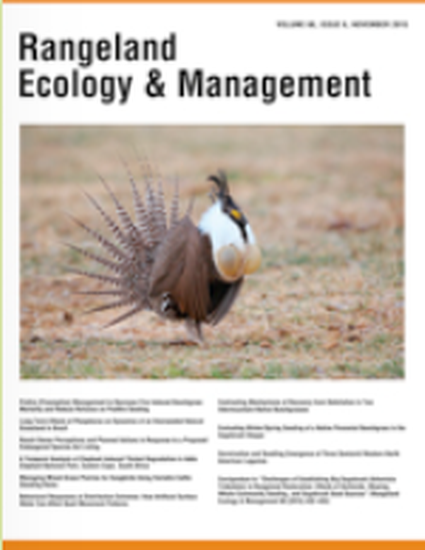
Article
Contrasting Mechanisms of Recovery from Defoliation in Two Intermountain-Native Bunchgrasses
Rangeland Ecology & Management
(2015)
Abstract
Grazing tolerance of dominant native species may determine the fate of rangeland ecosystems, and using native plant populations with good grazing tolerance in restoration seedings may improve ecosystem resilience, especially when domestic herbivores are present. We examined interspecific and intraspecific differences in shoot biomass and defoliation tolerance for two semiarid, perennial cool-season bunchgrasses native to the Intermountain West, USA, Pseudoroegneria spicata and Elymus wawawaiensis, on the basis of four functional traits (specific leaf area [SLA], plant basal area, tiller number, and tiller mass). We applied two treatments, control and boot-defoliation, where the latter included defoliation at the early-reproductive (“boot”) stage, the phenological stage most vulnerable to herbivory, while the control treatment did not. We tested two contrasting hypotheses (i.e., that boot-defoliation tolerance is increased through either increases in SLA or through more favorable tiller demography). For shoot biomass, both grasses were less productive under the boot-defoliation treatment than for the control, but E. wawawaiensis displayed higher boot-defoliation tolerance than P. spicata. Interpopulation variation occurred in all four functional traits for P. spicata, but there were no such variation for E. wawawaiensis.
Disciplines
Publication Date
2015
DOI
https://doi.org/10.1016/j.rama.2015.07.011
Citation Information
Peter B. Adler. "Contrasting Mechanisms of Recovery from Defoliation in Two Intermountain-Native Bunchgrasses" Rangeland Ecology & Management Vol. 68 Iss. 6 (2015) p. 485 - 493 Available at: http://works.bepress.com/peter_adler/121/
